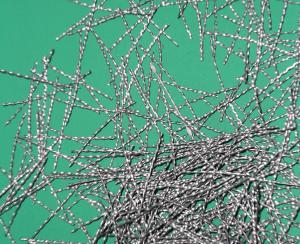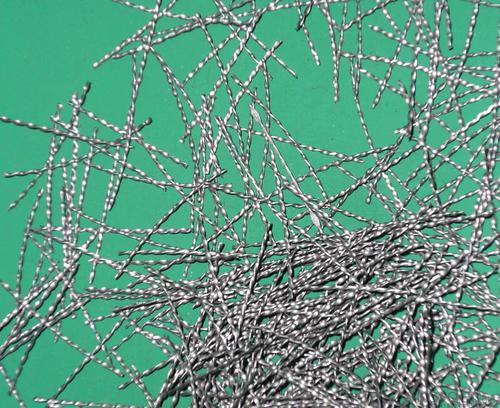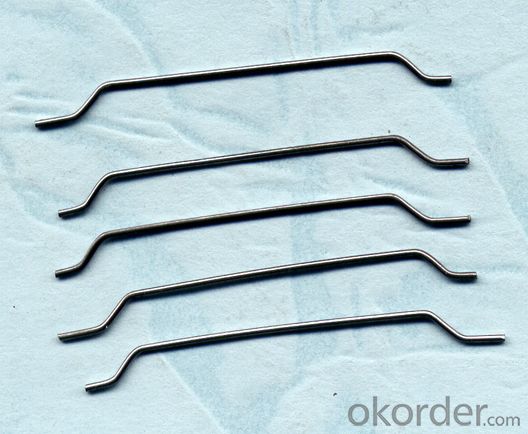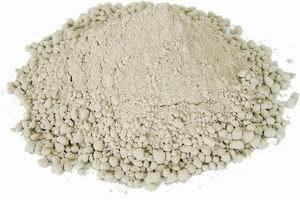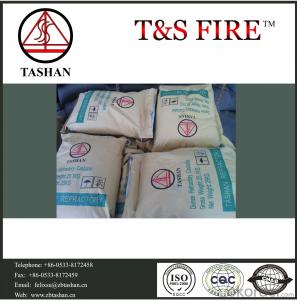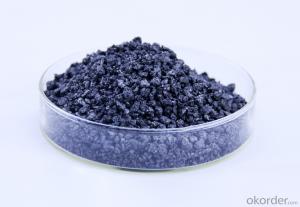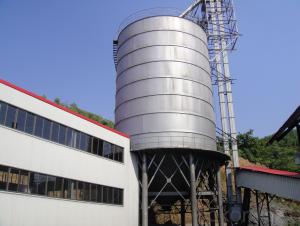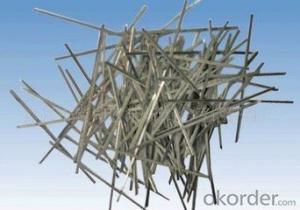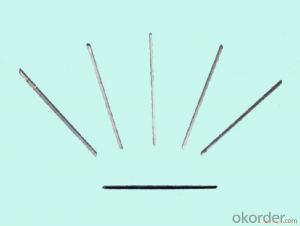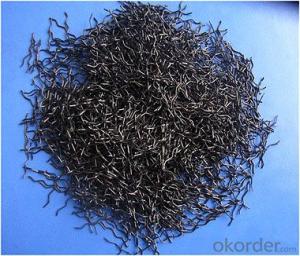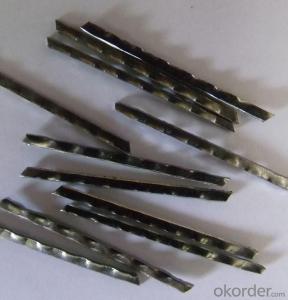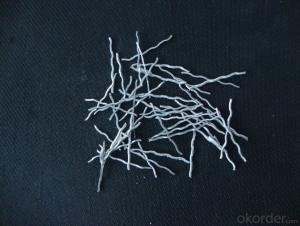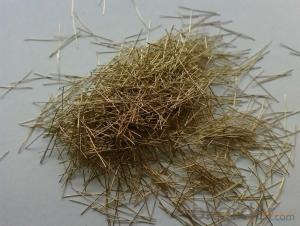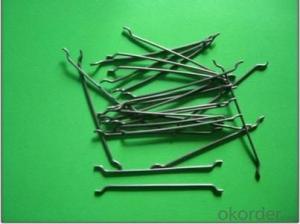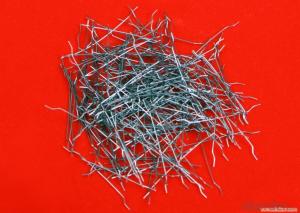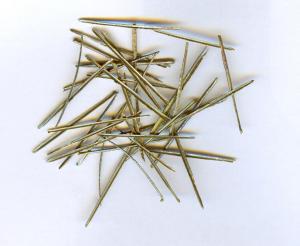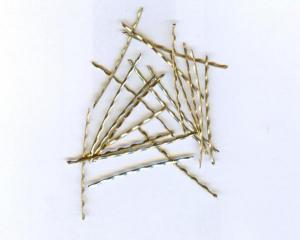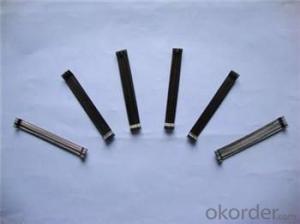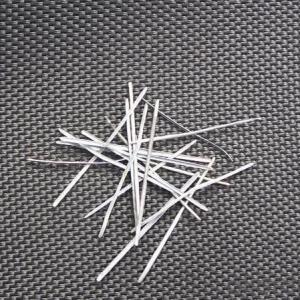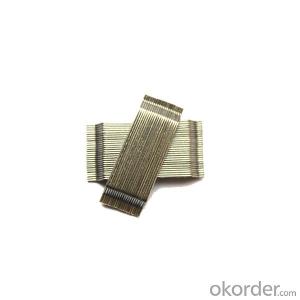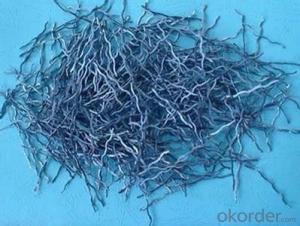Melt Extract Stainless Steel Fiber - Steel Fiber Copper Coated by CNBM International
- Loading Port:
- Tianjin
- Payment Terms:
- TT OR LC
- Min Order Qty:
- 1000 kg
- Supply Capability:
- 30000 kg/month
OKorder Service Pledge
OKorder Financial Service
You Might Also Like
Quick Details
Place of Origin: Jiangsu, China (Mainland)
Model Number: HT-ST
Material: Steel
Specifications
The raw material is stainless steel ingots, using electric stoves which melt the stainless steel ingots to become 1500 ~ 1600 ℃ steel liquid, and then with a grooved high speed rotating melt-extracting steel wheel which produces wires that meets are our customers’ specific requirements. When melting down to a wheel steel liquid surface, the liquid steel blow out by slot with centrifugal force at extremely high speed with cooling forming. Melting wheels with water keep the cooling speed. This method is done to produce different material, different sizes of steel fiber.
| SIZE | CHEMIC ELEMENT(%) | ||||||
| C | P | Mn | Si | Cr | Ni | Al | |
| AISI330 | ≤0.40 | ≤0.04 | ≤2.00 | ≤0.75 | 17~20 | 33~37 | |
| AISI310 | ≤0.40 | ≤0.04 | ≤2.00 | ≤1.50 | 24~26 | 19~22 | |
| AISI316 | ≤0.40 | ≤0.04 | ≤2.00 | ≤1.00 | 16~18 | 10~14 | |
| AISI314 | ≤0.40 | ≤0.045 | ≤2.00 | 1.5-3.0 | 23~26 | 19~22 | |
| AISI309 | ≤0.40 | ≤0.04 | ≤2.00 | ≤1.00 | 22~24 | 12~15 | |
| AISI304 | ≤0.40 | ≤0.04 | ≤2.00 | ≤2.00 | 18~20 | 8~10 | |
| AISI301 | ≤0.40 | ≤0.04 | ≤2.00 | ≤2.00 | 16~18 | 6~8 | |
| AISI201 | ≤0.40 | ≤0.06 | 5.5~7.5 | ≤1.00 | 16~18 | 3.5~5.5 | |
| AISI446 | ≤0.40 | ≤0.04 | ≤1.50 | ≤2.00 | 23~27 | ||
| AISI430 | ≤0.40 | ≤0.03 | ≤1.00 | ≤2.00 | 16~18 | ||
| NAS430A | ≤0.40 | ≤0.03 | ≤0.50 | ≤0.50 | 16~18 | 2~4 | |
| SIZE(mm) | ||||
| length | 20 | 25 | 30 | 35 |
| width | 0.75~1.5 | 0.75~1.5 | 0.75~1.5 | 0.75~1.5 |
| thickness | 0.2~0.75 | 0.2~0.75 | 0.2~0.75 | 0.2~0.75 |
Picture
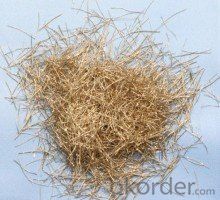
Steel fiber
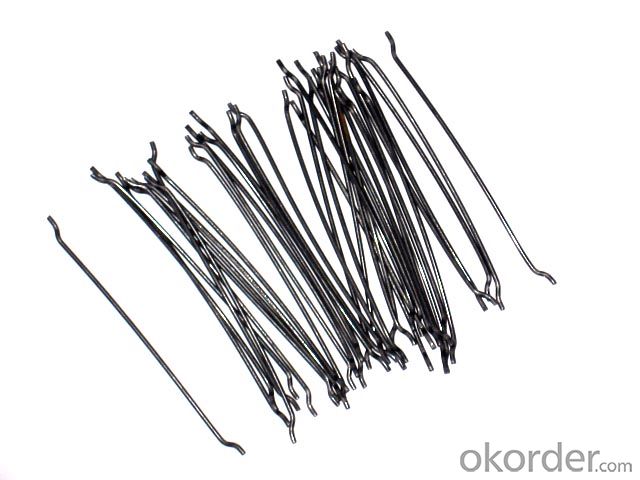
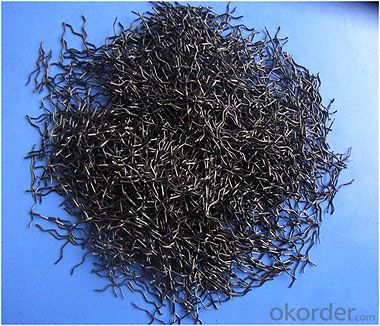
FAQ
certificated: ISO 9001
Technical advantages of Daye steel fiber:
A. Improve mechanical performance of concrete
B. Provide uniform distribution throughout concrete with excellent mixing
C. No balling or caking by adopt correct mixing method
D. Reduce concrete volume
E.Save construction time and cost
F.Reduce excavation volume
G.Available for jointless floor.
- Q: How does melt extract stainless steel fiber affect the plastic shrinkage of concrete?
- Melt extract stainless steel fiber can significantly reduce the plastic shrinkage of concrete. The fibers act as reinforcing elements, improving the overall tensile strength and reducing the development of cracks during the plastic stage of concrete. This helps to minimize shrinkage and improve the overall durability and performance of the concrete.
- Q: Is melt extract stainless steel fiber suitable for use in wastewater treatment plants?
- Yes, melt extract stainless steel fiber is suitable for use in wastewater treatment plants. Stainless steel fibers are highly resistant to corrosion and can withstand the harsh and corrosive environment found in wastewater treatment plants. They are also durable and have a long lifespan, making them ideal for use in such facilities. Additionally, the high strength of stainless steel fibers allows them to effectively reinforce concrete in wastewater treatment structures, such as tanks and pipes. This reinforcement helps enhance the structural integrity and durability of these facilities, ensuring they can handle the demands of wastewater treatment processes. Overall, melt extract stainless steel fiber is a suitable and reliable choice for use in wastewater treatment plants.
- Q: Can melt extract stainless steel fiber be used in tunnel lining rehabilitation applications?
- Melt extract stainless steel fiber is applicable for tunnel lining rehabilitation purposes. Known for their high strength, corrosion resistance, and durability, stainless steel fibers are suitable for various construction and rehabilitation projects. By incorporating these fibers into the concrete mix for tunnel lining rehabilitation, the mechanical properties of the concrete can be enhanced, and its resistance to cracking and spalling can be improved. The addition of stainless steel fibers increases the flexural strength of the concrete, reduces shrinkage, and enhances its overall durability. Moreover, these fibers also provide extra reinforcement to the tunnel lining, enhancing its resistance to seismic activity and other external forces. Ultimately, the utilization of melt extract stainless steel fiber in tunnel lining rehabilitation can extend the lifespan of the tunnel, improve its structural integrity, and minimize the need for frequent maintenance and repairs.
- Q: Are there any specific curing requirements for concrete with melt extract stainless steel fiber?
- Yes, there are specific curing requirements for concrete with melt extract stainless steel fiber. The curing process for this type of concrete typically involves covering the surface with a curing compound or using a curing membrane to retain moisture and promote proper hydration. Additionally, it is important to maintain a controlled temperature and provide adequate moisture to ensure the concrete achieves its desired strength and durability.
- Q: What is the recommended fiber geometry for melt extract stainless steel fiber in concrete?
- The recommended fiber geometry for melt extract stainless steel fiber in concrete is typically in the form of straight, monofilament fibers. These fibers are usually slender and have a diameter ranging from 0.15 mm to 0.50 mm. The length of the fibers can vary, but it is often recommended to use fibers with lengths between 20 mm to 50 mm for optimal performance in concrete. The use of straight, monofilament fibers offers several advantages in concrete applications. Firstly, these fibers provide excellent bonding with the surrounding concrete matrix, enhancing the overall mechanical properties of the material. Secondly, the straight geometry allows for effective dispersion and distribution of the fibers throughout the concrete, ensuring uniform reinforcement and improved crack control. Additionally, the slender diameter of the fibers allows for easier mixing and placement of the concrete, without significantly affecting the workability of the mixture. It is important to note that the specific fiber geometry may vary depending on the desired performance requirements and the specific application of the concrete. Therefore, it is recommended to consult with manufacturers or experts in the field to determine the most suitable fiber geometry for a particular project.
- Q: How does the aspect ratio of melt extract stainless steel fiber affect its performance?
- The aspect ratio of melt extract stainless steel fiber refers to the ratio of its length to diameter. A higher aspect ratio generally leads to improved performance of the fiber. This is because a higher aspect ratio allows for a greater surface area and better interlocking within the matrix material, resulting in enhanced mechanical properties such as increased tensile strength, improved crack resistance, and better overall reinforcement. Additionally, a higher aspect ratio can enhance the fiber's ability to distribute stress evenly, leading to improved durability and longevity.
- Q: What are the different types of melt extract stainless steel fibers available in the market?
- There are several different types of melt extract stainless steel fibers available in the market. Some of the most common types include: 1. Type 304 Stainless Steel Fibers: These fibers are made from a combination of iron, chromium, and nickel. They offer excellent corrosion resistance and are often used in applications where exposure to chemicals or moisture is a concern. 2. Type 316 Stainless Steel Fibers: These fibers are similar to Type 304, but they contain a higher amount of molybdenum, which provides even greater corrosion resistance. They are often used in more demanding environments, such as marine applications or in areas with high chloride concentrations. 3. Type 430 Stainless Steel Fibers: These fibers contain a higher amount of chromium and are known for their good resistance to oxidation and heat. They are often used in high-temperature applications, such as in furnaces or automotive exhaust systems. 4. Type 410 Stainless Steel Fibers: These fibers contain a higher amount of carbon, which gives them excellent wear resistance. They are often used in applications where abrasion or wear is a concern, such as in concrete reinforcement or in industrial equipment. 5. Type 420 Stainless Steel Fibers: These fibers contain a higher amount of carbon and are often heat treated to increase their hardness. They are commonly used in applications where high strength and wear resistance are required, such as in cutting tools or in high-load bearing structures. It is important to note that the availability of these different types of melt extract stainless steel fibers may vary depending on the supplier and the specific requirements of the application. It is recommended to consult with a knowledgeable supplier or engineer to determine the most suitable type for a particular project.
- Q: Can melt extract stainless steel fiber be used in pedestrian walkway pavements?
- Melt extract stainless steel fiber is a suitable option for pedestrian walkway pavements. Concrete mixtures are frequently enriched with stainless steel fibers to enhance their mechanical properties and overall performance. By incorporating stainless steel fibers, the concrete's tensile strength and resistance to cracking are increased, resulting in improved durability and suitability for high-traffic areas such as pedestrian walkways. Moreover, the utilization of stainless steel fibers offers better corrosion resistance and aids in preventing crack formation due to temperature fluctuations or shrinkage. Consequently, melt extract stainless steel fiber is an exceptional choice for reinforcing pedestrian walkway pavements, guaranteeing their longevity and safety.
- Q: How does melt extract stainless steel fiber prevent plastic shrinkage cracking in concrete?
- Melt extract stainless steel fiber serves as a reinforcement material widely employed in concrete to mitigate the occurrence of plastic shrinkage cracking. This type of cracking arises when the concrete surface rapidly dries, leading to shrinkage and cracking before complete hardening. During the concrete mixing process, stainless steel fibers are incorporated into the mix. These fibers possess a remarkably thin structure and exhibit a high tensile strength, enabling them to endure substantial stress without fracturing. As the concrete begins to dry and contract, the stainless steel fibers uniformly distribute the stress throughout the concrete matrix, thus preventing the formation of sizable cracks. Moreover, the presence of these fibers aids in reducing the overall drying shrinkage of the concrete. This is due to the fact that the fibers establish a network within the concrete, binding it together and restricting the movement of individual particles. Consequently, as the concrete dries, it experiences diminished shrinkage, thereby minimizing the likelihood of cracking. Furthermore, the incorporation of stainless steel fibers enhances the durability and toughness of the concrete as a whole. These fibers heighten resistance to impact, abrasion, and cracking, rendering the concrete more resilient and long-lasting. In conclusion, by providing reinforcement and diminishing overall shrinkage, melt extract stainless steel fiber plays a pivotal role in the prevention of plastic shrinkage cracking in concrete. Its inclusion in concrete mixes ensures that the surface remains intact and structurally sound, even during the initial stages of drying and hardening.
- Q: Can melt extract stainless steel fiber be used in fiber-reinforced shotcrete?
- Fiber-reinforced shotcrete can indeed incorporate melt extract stainless steel fiber. Shotcrete applications commonly utilize stainless steel fibers due to their impressive tensile strength, resistance to corrosion, and overall durability. The melt extract process guarantees consistent and uniform fiber properties, rendering it an ideal choice for reinforcing shotcrete. The inclusion of stainless steel fibers in shotcrete greatly enhances its mechanical properties, including flexural and impact strength, crack resistance, and ductility. As a result, the overall performance and lifespan of the shotcrete structure are significantly improved. However, it is crucial to consider the specific requirements of the application, fiber dosage, and mix design to ensure the appropriate and effective utilization of stainless steel fibers in fiber-reinforced shotcrete.
Send your message to us
Melt Extract Stainless Steel Fiber - Steel Fiber Copper Coated by CNBM International
- Loading Port:
- Tianjin
- Payment Terms:
- TT OR LC
- Min Order Qty:
- 1000 kg
- Supply Capability:
- 30000 kg/month
OKorder Service Pledge
OKorder Financial Service
Similar products
Hot products
Hot Searches
Related keywords
